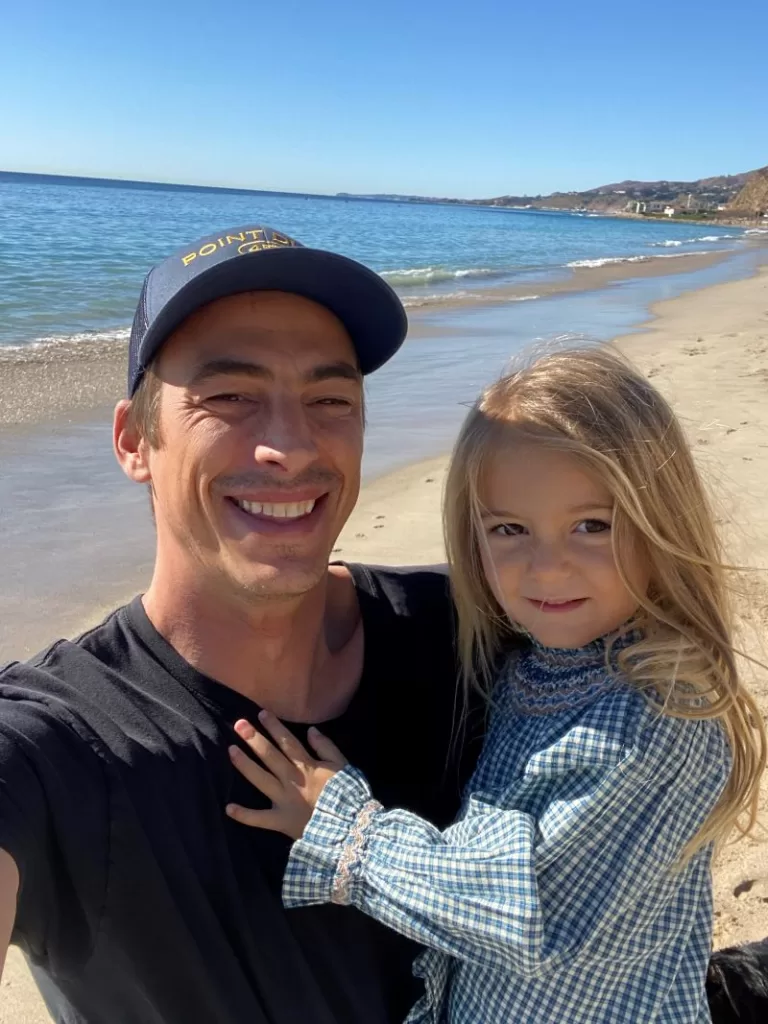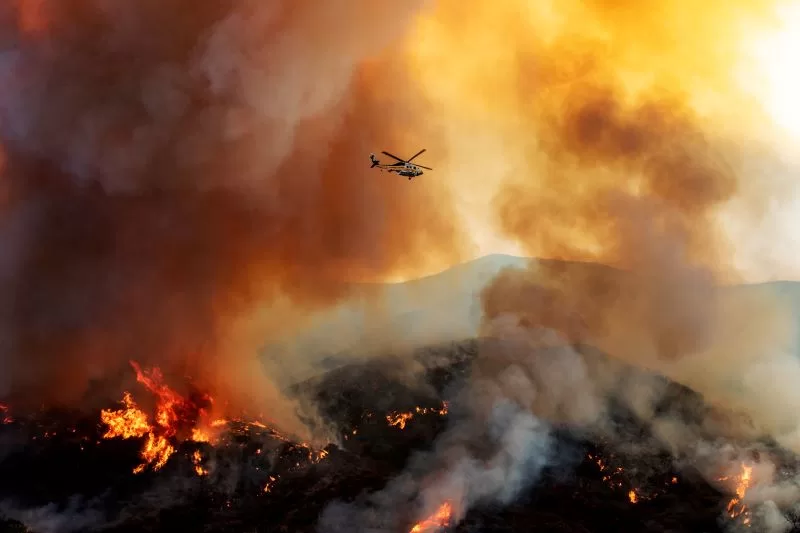
A fire through Topanga could surpass the death toll from the Camp Fire in Paradise and the Lahaina Fire in Hawaii, combined. And potentially, several times over.
Does that get your attention? If it doesn’t, I understand.
I grew up in the Santa Monica Mountains. The regular cadence of wildfire here almost conditions you to drop your guard after the first three or four fires that don’t get you. Sure, some people lose a few houses in a nearby neighborhood, but time heals, people rebuild, and we forget. The fire department becomes the boy who cried wolf with their evacuation warnings and orders. Power outages and being stuck away from home becomes a nuisance.
As a young kid, I remember watching fires roll through canyons at night, the orange glow dancing from ridge to ridge in a seemingly harmless progression from a distance. Oddly, I never felt threatened, and I would stare at the glow for hours. Humans had an incredibly beneficial relationship with fire for 10,000+ years. We used it to hunt and to manage land, and entire ecosystems adapted and thrived because of its regular presence. There is something primal, engrained deep within our genetic ancestry, that draws our gaze into a campfire, a foundational respect and appreciation for the thing that filled our stomachs and propelled us to the top of the food chain.
But five years ago, while living in Topanga with my wife and then one year old daughter, I watched with that same campfire awe as the Woolsey Fire ripped from the valley to the beach, ultimately destroying my parents home that I grew up in, as well as many of my friends’ homes throughout western Malibu. In its wake was revealed the many misperceptions we all have about fire.
Since then, I have made it an obsessive mission to record the event not as a loss, but rather as a learning opportunity to understand how we can live better with its inevitable presence. Having dedicated more time than I care to admit in attempting to understand this “wildfire problem”, this is my plea to not take this powerful force for granted, and to share the important things I have learned.

NUMBER ONE It is not a matter of IF there is going to be a major fire in Topanga, it is a matter of WHEN.
Just because Topanga hasnt seen a major fire in 30 years (since the ‘93 Old Topanga Fire, that largely left Topanga unscathed and blew toward eastern Malibu), it doesn’t mean it won’t. Point Dume in Malibu hadn’t burned in 50 years prior to Woolsey, and many wrongly assumed it never would.
LA County Fire is the most well equipped, trained and experienced wildland fire force tasked with protecting the largest metropolitan area within our Wildland Urban Interface in the world. There have been many incredible saves over the last 30 years, many of which you have not even heard about. The aerial attack force continues to expand, technology advances are employed, and infrastructure like 69 Bravo Helistop (see www.69Bravo.com) are built specifically to address the significant threat in Topanga.
But this added protection breeds our complacency. Yes, they are successful 99.9% of the time. But that .1%? That’s Woolsey. That’s Camp. That’s Lahaina.
NUMBER TWO If the next Topanga fire starts on a significantly windy day near the Top of Topanga, there are potentially going to be 5,000 people trapped in the canyon as it burns to the beach. Five Thousand.
When winds are above 50mph, which occurs a few times a year, water dropping helicopters and planes aren’t very effective. It amounts to little more than pissing in the wind. And once that fire gets established and bigger than 50 acres, the only thing stopping it is the Pacific Ocean.
“So then we evacuate right?”
Here is the doozy, and why I am writing this letter.
All emergency service organizations have table-topped this scenario many times over the last 30 years in preparation. Under the absolute best case scenario, in the daytime with sunny skies, clear communication and no morning or evening TCB traffic, it will take five to six hours to evacuate 12,000 people from Topanga that are in the fire’s path to the beach.
The problem is, it will only take three to four hours for the fire to go from the top of Topanga, to the beach.
If that wasn’t clear enough, I’ll repeat it. At a minimum, it takes six hours to evacuate 12,000 people from within Topanga, but it only takes three hours to burn the entire canyon from top to bottom. This leaves up to 5,000 people, either still in their homes, or on the narrow roads, as the fire passes through.
Add a couple of curveballs. During Woolsey, while evacuating Topanga, a car driven by a panicked evacuee flipped over, blocking the road in the S-curves down Topanga Canyon Blvd. What if the fire starts in the middle of the night. the power is out, and cell service is slim to none? What if it starts durin morning or evening commuter traffic, and TCB is choked even before an evacuation starts? What if…?
The potential unforeseen circumstances are impossible to predict. This is why they are disasters. The town of Paradise, California was one of the pioneers of creating evacuation zones similar to what we have in Topanga. For more than a decade, they ran drills and public awareness campaigns, preparing for a major fire. But in 2018, the Camp Fire exceeded all predictions and preparations. 16,000 structures were lost and 86 people died.
So, what now? We must take radical ownership of our decision to live where we do.
HARDEN YOUR HOME During fires, people debate leaving at all, and when they do, they often stumble with trying to prepare their house, forcing a late and panicked evacuation. Many people assume that there will be firefighters there to protect their structures, but the threat to life safety is so extreme in Topanga, firefighters will initially only be focusing on saving lives, not houses. Home hardening is the only scalable solution to preventing structure loss to wildfires. Visit www.laepf.org/ignition-zone to book a free home assessment.
TAKE RED FLAG DAYS SERIOUSLY Four hours from the start of the fire to the beach. An extremely short timeframe. On average, there are 15 Red Flag days a year. If you are outside the canyon when a fire starts, there is little to no chance you are making it back to get your valuables or your pets. Plan accordingly for these days. For some, it may be working from home or keeping your kids home from school. For others, it may be pre-evacuating as many people do now in Australia for extreme wind events. Prepare in the months leading up to Red Flags, not the hours before.
FOLLOW TCEP Topanga has an incredible culture and history of preparedness, driven by the work of engaged community members like Beth Burnam and James Grasso. TCEP.org is a great starting point not only for wildfire preparation best practices, but for all-hazards information for the canyon.
COMMUNICATION Get an AM/FM radio. Get a free weather alert radio from LA County Fire. Download WatchDuty App and set up your notifications. Talk with your neighbors about their plans. Have backup power and ways to receive communication during outages.
EVACUATE EARLY If you have hardened your home, and you’ve prepared for the wind event, evacuating early shouldn’t be a problem. There is no reason to wait and guess if a fire is actually a threat or not. Leave early, and calmly, so you are on the safe side. Best case scenario, you had a fire drill, better ready for the next time. Worst case, you got out before it was too late. If you think you are going to stay to protect your home, I hope you not only have the equipment, but years of experience, because I now know that even the most seasoned firefighters wouldn’t be caught in Topanga during a fire. Some communities have opportunities to safely defend; Topanga is not one of them.
I realize that to some, this will come off as alarmist. Yes, this is painting a dramatic picture. But it isn’t without precedent. Topanga, at some point, will burn. It might be in another 30 years, or it might be this November. But if this message encourages even one of my neighbors to successfully prepare, it is well worth taking the time to write it. Start talking with your neighbors about their plans. There are a lot of incredible people here that will share their experience and their plans for the day. Hope for the best, but plan for the worst and be better off than my family and many of my friends were five years ago.
By Keegan Gibbs




